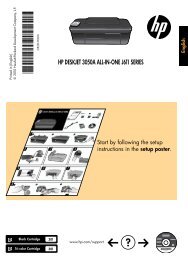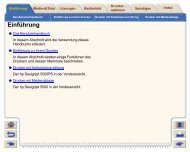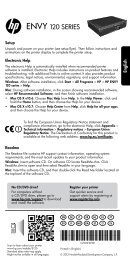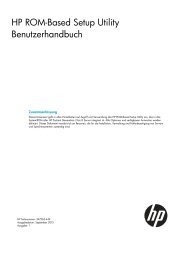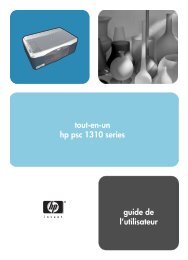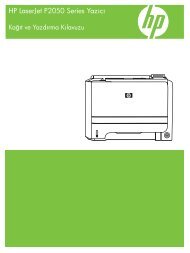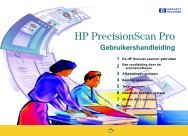HP Officejet 4500 (G510) - FTP Directory Listing - Hewlett Packard
HP Officejet 4500 (G510) - FTP Directory Listing - Hewlett Packard
HP Officejet 4500 (G510) - FTP Directory Listing - Hewlett Packard
Create successful ePaper yourself
Turn your PDF publications into a flip-book with our unique Google optimized e-Paper software.
NOTE: On a Macintosh computer, the features available in the <strong>HP</strong> Utility vary depending on<br />
the selected device.<br />
Ink level warnings and indicators provide estimates for planning purposes only. When you<br />
receive an ink alert message, consider having a replacement cartridge available to avoid<br />
possible printing delays. You do not need to replace cartridges until print quality becomes<br />
unacceptable.<br />
TIP: When the <strong>HP</strong> Utility is opened, you can gain access to the Dock menu shortcuts by<br />
selecting and holding the mouse button over the appropriate icon for the <strong>HP</strong> Utility in the Dock.<br />
Open the <strong>HP</strong> Utility<br />
To open the <strong>HP</strong> Utility<br />
▲ Click the <strong>HP</strong> Utility icon in the Dock.<br />
NOTE: If the icon does not appear in the Dock, click the Spotlight icon on the right side of<br />
the menu bar, type <strong>HP</strong> Utility in the box, and then click the <strong>HP</strong> Utility entry.<br />
Embedded Web server (some models only)<br />
When the device is connected to a network, you can use the embedded Web server to view status<br />
information, change settings, and manage it from your computer.<br />
NOTE: For a list of system requirements for the embedded Web server, see Embedded Web<br />
server specifications (some models only).<br />
Some settings might be restricted by the requirement for a password.<br />
You can open and use the embedded Web server without being connected to the Internet;<br />
however, some features will not be available.<br />
The embedded Web server (EWS) places very small text files (cookies) on your hard drive when<br />
you are browsing. These files let the EWS recognize your computer the next time you visit. For<br />
example, if you have configured the EWS language, a cookie helps remember which language you<br />
have selected so that the next time you access the EWS, the pages are displayed in that language.<br />
Though some cookies are cleared at the end of each session (such as the cookie that stores the<br />
selected language), others (such as the cookie that stores customer-specific preferences) are stored<br />
on the computer until you clear them manually.<br />
You can configure your browser to accept all cookies, or you can configure it to alert you every time<br />
a cookie is offered, which allows you to decide which cookies to accept or refuse. You can also use<br />
your browser to remove unwanted cookies.<br />
NOTE: Depending on your device, if you chose to disable cookies, you will disable one or more<br />
of the following features:<br />
• Automatically refreshing the existing page<br />
• Starting where you left the application (especially useful when using setup wizards)<br />
• Preventing other users from modifying the same settings while you are making changes<br />
• Remembering the EWS browser language setting<br />
For information about how to change your privacy and cookie settings and how to view or delete<br />
cookies, see the documentation available with your Web browser.<br />
To open the embedded Web server<br />
NOTE: The device must be on a network and must have an IP address.<br />
Embedded Web server (some models only) 207








